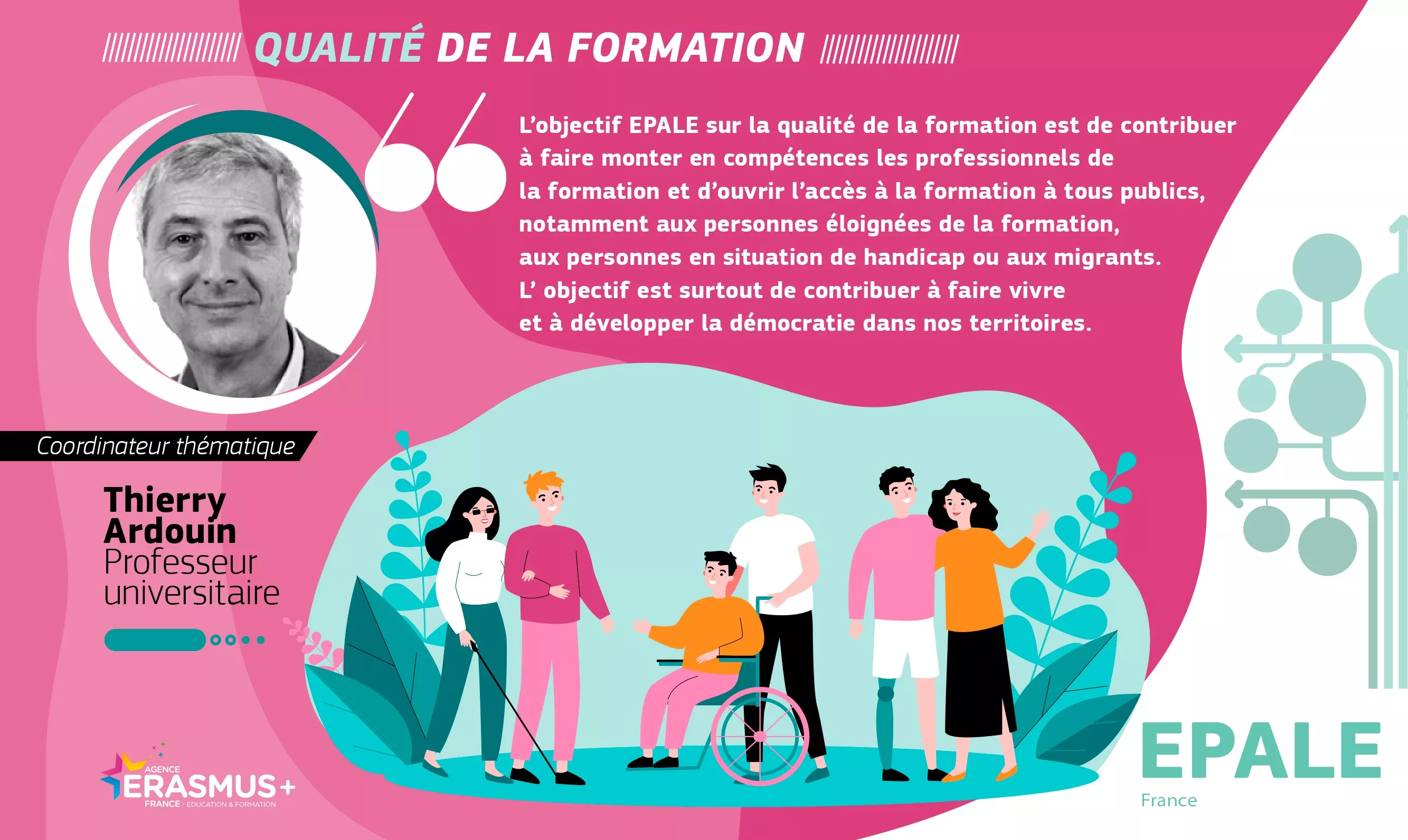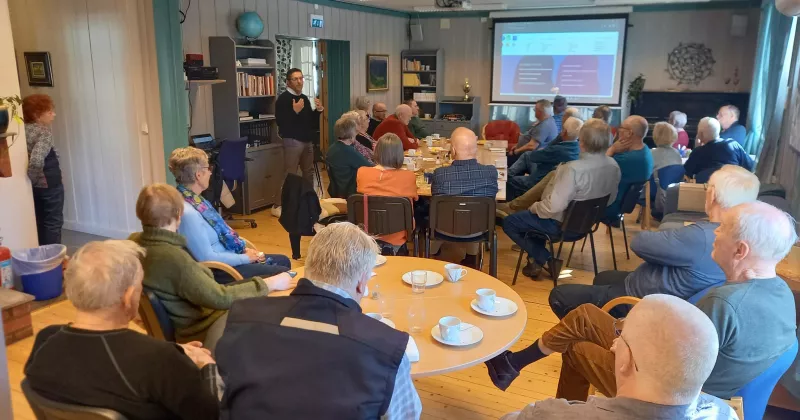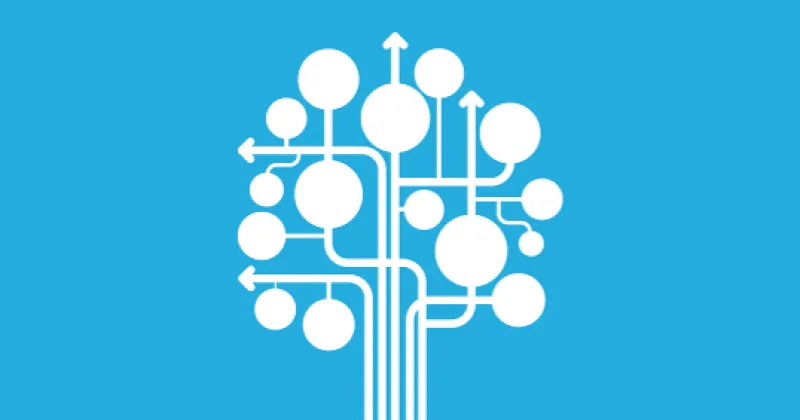The in-between approach in education
[Translation : EPALE France]
Interview with Ms Thouroude following the publication of her book “Prévenir les handicaps et les violences. La posture de l'entre-deux en éducation” (Prevention in contexts of disability and violence. The in-between approach in education)
Hello Ms Laurence Thouroude, you are a lecturer in Education and Training Science at the University of Rouen Normandy and you work on and question the in-between approach in education, particularly in relation to violence and disability. You have just released a book entitled “Prévenir les handicaps et les violences. La posture de l'entre-deux en éducation” published by Champ Social. This is an interesting topic for all teachers, educators and trainers.
- To begin, could you tell us a little more about yourself, your background, and what brought you to work on this notion of “in-between”?
My professional career can be divided into two periods: a first period teaching young children, mainly in kindergarten, and a second period, which is still ongoing, as a lecturer at the University of Rouen Normandy. I defended my thesis in 1996, under the supervision of Claude Malandain, a clinical psychologist, on the tolerance of differences in kindergarten, with a particular focus on disability and integration in regular schools. I then expanded my teaching and research to explore issues of violence in schools. My research on CLIS classes (Classes d'Intégration Scolaire, or special integration classes), for pupils aged 6 to 12 with severe learning difficulties, led me to study the various forms of resistance to learning.
As I was doing my research, one of my colleagues left to work at a Canadian university and handed over his course on violence in schools, telling me that I was competent enough to be teaching it. I worked hard to be able to do so, and I thank this colleague for placing his trust in me. I am passionate about problems, and this passion drives my research. When I read the seminal work by Daniel Sibony, philosopher and psychoanalyst, entitled "Entre-deux, l’origine en partage" (1991), I discovered that the “in-between”, as he theorised it, was a valuable tool for understanding our relationship with the other, those who are different, in difficult educational contexts. Sibony agreed to write the preface to my book, and I thank him for that.
- What is the in-between? Where does this concept come from? How do you define it?
The in-between refers to both an uncomfortable and risky situation involving identity issues, and a successful encounter with the other, someone who risks altering my personality, my own vision of the world. Sibony proposes an alternative view of difference, based on common factors that link together, in order to initiate a genuine encounter with otherness, which is not self-evident. Encounters with the adolescent, the unique, the different, those in difficulty, is moreover a recurrent problem for the educational system. The challenge for the pupil is always to find their place, to feel at home, in order to be able to develop harmoniously and to progress in their learning. Passing tests, negotiating difference and resemblance, is all about finding the in-between, both in the school context and beyond.
The in-between is a concept, and therefore a theoretical construction, which invites us to look at the complexity and uniqueness of human reality. Thinking about the in-between means thinking about one’s link to the other. “There is nothing more practical than a good theory”, said Kurt Lewin, meaning that concepts allow us to approach a concrete situation more easily, and ultimately to better understand human reality.
- What is the interest of this notion of in-between in education and specifically with regard to violence and disability in schools?
The in-between is a multifaceted concept. Throughout my training, I have seen that the in-between is everywhere in education. Firstly, through an approach I refer to as “neither... nor...”, defended by psychoanalysis, with the aim of preventing neuroses: neither rigidity nor laxity, but flexibility. The idea is to strike the right distance from the pupil, between too close and too far, between too much presence and too much absence, much like Winniccott's “good enough mother”. This aspect of the in-between is of course still relevant, bearing in mind that the greatest difficulty in education lies precisely in avoiding excesses and errors: finding the in-between and maintaining it in the long term. In the course of my research, reading Daniel Sibony, I discovered other facets of the in-between, which I linked to situations of disability and violence in education, to better understand them. My first publication on the in-between dates from 2002, and is entitled: “L’entre-deux de l’intégration et l’intégration de l’entre-deux à l’école maternelle” (The in-between of integration and the integration of the in-between in kindergarten). After that, I never left it; it became my common theme.
I see the in-between as an approach that seeks to prevent exclusion. What disability and violence have in common is precisely the threat of exclusion, even if only 'from within', as Bourdieu puts it. I see disability and violence as failed encounters in the school context. By focusing exclusively on differences, common factors are obscured, a situation I call a “lack of in-between”. The encounter is an entry through the common factors that link people, not through the differences that divide and create distance. Finding the in-between means finding a link with the child, the adolescent and also the adult in training. Each person must feel that they have a place, that they are recognised and supported in their learning process.
- In your book, you describe the in-between in three forms: passages, identities and approach, could you explain this and perhaps give us an example?
The transitions at highest risk of exclusion for all are clearly those from family to school (entry into kindergarten), and from primary school to secondary school (entry into adolescence). The identities most affected by the risk of exclusion are those considered most problematic in terms of learning and socialisation objectives. Mental disability is the most affected by social exclusion and the most feared by teachers. Encounters are particularly difficult when the subjects are not very receptive to pedagogy, for example pupils with autism who do not show their school achievements and their pleasure in learning, pupils with behavioural problems who use all forms of more or less violent resistance to make themselves heard.
I define the approach as “a constant orientation of thinking”. I say thinking rather than thought, because thinking integrates unconscious elements in the encounter with the other, and is only partially expressed in words. The approach conveys unspoken messages.
The in-between as an approach invites us to go beyond the identity divide. For example: disabled/non-disabled, French/immigrant, and other "perverse partners" that refer to this more fundamental perverse partnership, namely identity/difference, as Sibony (2009: 225) puts it. Thinking about the in-between, on the contrary, involves leaving room for play in spaces, in order to open up to the third party: finding common ground for communication, knowing how to make room for the other, who is different and unique. In this perspective, I develop the "educational needs for all" as a starting point for encounters, based on our common humanity: need for the maternal and paternal functions to humanise oneself, need for self-esteem to nourish self-confidence (narcissistic contributions), need for social and academic support (fighting anxiety), need for a positive relationship with knowledge, need for links to teachers and to the peer group (identification).
The pedagogical relationship is never neutral and the relationship to knowledge is heavy with affect. Identifying with teachers is very important. Sometimes the attraction for a subject is entirely conditioned by a strong bond of identification with the teacher. Conversely, a subject may be neglected or even hated because of a lack of identification with the teacher.
The most common example of the lack of in-between is the denial of a student's difficulties. This stance is usually expressed in the following terms: “But it's easy!” when a pupil is having difficulty with an exercise or problem to be solved. This approach blocks the encounter, prevents the identification process from operating, and ultimately leads to discouragement rather than effort. On the contrary, to say in substance: “Yes, I know it's difficult, I've had these difficulties too, but I've worked hard and managed to overcome them. I know you can do it too”. We mustn’t deny difficulties, but rather support students' efforts to overcome them, build on common factors that will push students to do their best in school tasks.
- You question the training of professionals, what are the proposed avenues or for training?
I see two important aspects in the training of professionals. The first is their knowledge of the audience to be educated or trained. This knowledge is not only based on sociological knowledge, even though these aspects are important. Knowing your audience is only to a lesser extent achieved by classifying malfunctions, which are primarily concerned with the medical community. The biomedical and the educational point of view are two different approaches. We are not asking the teacher, the trainer, to become a doctor. But this does not diminish their responsibility and power to act. Whatever our differences and limitations, we are all the result of education, and therefore of encounters and connections. It is in the knowledge of the human being as a whole that progress must be made in the professions dealing with others.
This is why the training of professionals must include consideration of basic human needs and the educational needs of all. However, these needs must be known to professionals and therefore taught in their training courses. I propose a common foundation of training in education sciences for all, before any form of disciplinary specialisation.
In order to be able to take differences into account without stigmatising them, it is necessary to combine the first part of knowledge of the other with a second part: knowledge of oneself. It is essential to work on oneself and one's own posture as a teacher, educator or trainer, both in initial training and lifelong learning. Discussion groups and practice analysis, when conducted by trained and competent professionals, are valuable tools for training. Professions involving dealing with others are a commitment for us as individuals, in our intimacy, our history and our values. We ourselves as professionals need to feel valued, supported, connected by a sense of belonging to a professional group. It is always important to find the in-between, in the educational link as well as in the professional link.
Thank you very much for this discussion and for your rich, detailed contribution. I invite any person or organisation interested in your approach to continue this discussion with you.
Thierry Ardouin






